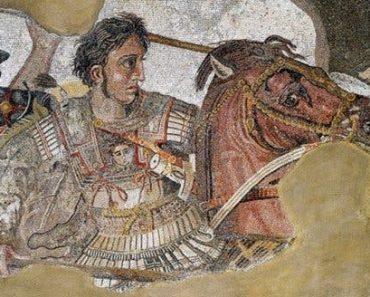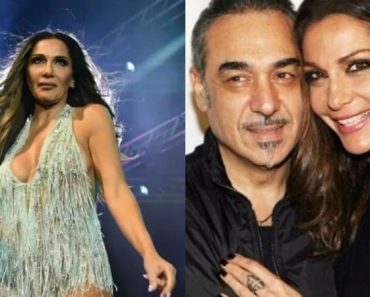I should have known something special was happening Downtown on a windy, wet, early-April evening when I saw a 10-year-old girl literally yanking her mother into the box office of the Benedum Center. I hadn’t seen a child this excited to attend a performance since I witnessed a little boy twirling his red matador cape outside of the Plaza de Toros de Las Ventas in Madrid over a decade ago. But this wasn’t for a bullfight — or a football game, or any of the other sports-like venues one can find locally. This impassioned young person was stoked to see the Pittsburgh Ballet.
The performance that night was indeed transformative and has changed the way I look at how art is communicated. Artistic disciplines such as painting, music, architecture, novels, poetry — and yes, of course, dance — are usually siloed evocations. We normally think of these as distinct forms. They all have a vocabulary, a tradition, and a way of interacting with an audience. But what I experienced that evening was something transcendent: It was ballet conceived as not just dance, but a kind of poetry.
Something I read in Friedrich Nietzsche’s The Birth of Tragedy (1872) has always struck me as insightful, and offered a clue as to how this might be, when he wrote that the nature of the language of Sophocles, the great ancient Greek poet and dramatist, “was revealed in dance.” For years I’ve been meditating on this concept. As an epiphany, it felt, ironically, both ineffable and yet utterly self-evident to the human psyche.
For the ancient Greeks, poetry, dance and music were syncretistic practices, often fused in performances that could be either secular or religious. Their term for this, mousike, is the basis of the word “musical,” and also signified an inherent relationship to the group of goddesses known as the Muses.
However, in this age, we have generally divorced these disciplines and, I believe, in a kind of negative gestalt, lost the synergistic effect of these arts performed together, such that the individual parts do not equal the sum of what the ancient Greeks had conceived.
But what I realized that night at the ballet is that creating this effect is not merely the product of combining disparate artistic modes; rather, it’s evoking what film director Paul Schrader calls the “transcendental style” — that is, achieving a convergence that enables one form to assimilate another, in the way that Nietzche said the poetic language of Sophocles was revealed in dance. In this case, the Pittsburgh Ballet revealed in dance a kind of poetry. In fact, the first piece performed that night, called “Violin Pas de Deux,” was not just poetic; it impressed me as literally a poem itself. And strikingly, this work, comprising two dancers interacting to the music of Max Bruch’s Violin Concerto No. 1, had no dialogue. But the movement, as choreographed by Yoshiaki Nakano, between the female (Jessica McCann) and the male (William Moore) entities was so phantasmagoric that their forms began to dissolve until all that mattered was the space between them, and how that space became a thing more expressive than the dance itself. They coalesced like incarnated spirits enjoying the physical manifestation of their bodies for the first time. The way that in a strong poem the words shouldn’t tell you anything, they should show you everything. We often use the expression “beyond words” when this happens, which is a synonym for the sublime. And in this case, what we were watching was “beyond dance.”
In fact, there is a precedent for this: the Random House Dictionary, under its definition of “poem,” lists non-literary examples, such as a “symphonic poem.”
The origin of this concept pre-dates the Greeks, and even may be primordial. It’s something that the Greeks took for granted, but we seem to have forgotten. On the deepest human level, it’s not that poetry, music and dance are three distinct elements that can be fused; actually, they are one form of expression, intrinsically.
Citing the work of philosopher Maurice Merleau-Ponty, scholar David Abram theorizes that movement and gesture were the original forms of speech, such that “communicative meaning is first incarnate in the gestures by which the body spontaneously expresses feelings … the gesture is the bodying-forth of that emotion into the world.” He concludes, “The bodily gesture speaks directly to our own body and is thereby understood without any interior reflection.” Perhaps this is why movement can be so poetic: It’s a way of communicating without words and is, therefore, the most profound method for us to show, not tell, what we are trying to express. Words have to fight against their own nature to achieve the sublime, in a kind of unspooling of meaning, while movement — the essence of dance — is already there.
Unlike contemporaneous America, ancient Greece was probably one of the most aesthetically homogenous cultures in history; in fact, during the 5th century BCE, the Athenian state began subsidizing, and later offering for free, theater tickets to its citizens. Furthermore, judging by which plays were awarded prizes (the agon between literary works was not only customary, but essential to the maintenance of high public standards), there would not have been wide disagreement about what constituted strong poetry, a dilemma we currently face in this country. Now, as master of fine arts degrees have supplanted life experience as the prime conferment of literary excellence, and poems are often chosen for publication based on their moralistic and didactic qualities — check recent issues of The New Yorker, Kenyon Review, or Poetry — we not only have lost the general sense of what should serve as the basis of the sublime, but it’s as if the failure of poetry has sublimated itself into other art forms. Hence, the burden of transcendence has blossomed into other genres, such as ballet.
But this diminution of poetic élan vital is not new; in fact, it’s been occurring for a long time. Eerily prescient, poet and critic Ezra Pound admonished aspiring poets in a 1913 essay: “Don’t imagine that the art of poetry is any simpler than the art of music, or that you can please the expert before you have spent at least as much effort on the art of verse as the average piano teacher spends on the art of music.” That he chose music as the comparative discipline is a pregnant choice, as musicians — like dancers and other such skill-based artists — generally require a tremendous investment of time to achieve any basis of demonstrative accomplishment. Pound’s warning is actually an adumbration of Malcolm Gladwell’s famous theory of the “10,000-hour rule.” How many practicing twentysomething poets today have put in their 10,000 hours? Compare this to dancers of the same age in any ballet company who certainly have, intensively practicing their craft since childhood. Might not the disparity of this investment be seen in their relative creations? And ultimately, have the more rigorously studied art forms now — at least in contemporary American culture — not only surpassed but supplanted poetry from its historical zenith — established in ancient Greece — of aesthetic expression?
I would argue, yes. It’s easy to write a poem. You can do so in just a minute or two. But try executing an arabesque en pointe onstage in a demanding choreography with a dozen other dancers moving at tremendous speed in perfect tempo with the music. Or playing competently in any professional jazz, folk, or rock band, let alone a major symphony.
Perhaps this is what that 10-year-old girl was pulling her mother into the door of the Benedum Center to experience on that windy April night. She didn’t need words to express what she felt. Like a dancer, her movement was a much stronger, and more poetic, form of expression. And this may be why she was so excited to experience the ballet. She was, innately, already fluent in the language of dance. If only our poets could be so wise.
For further information on Pittsburgh Ballet Theatre, please visit www.pbt.org, or call 412-281-0360.





